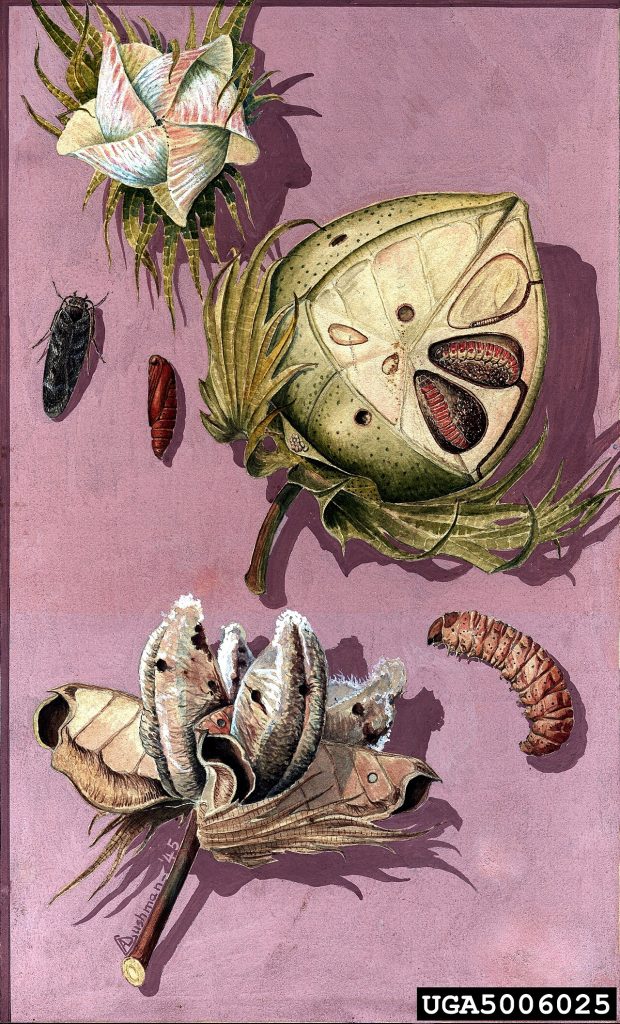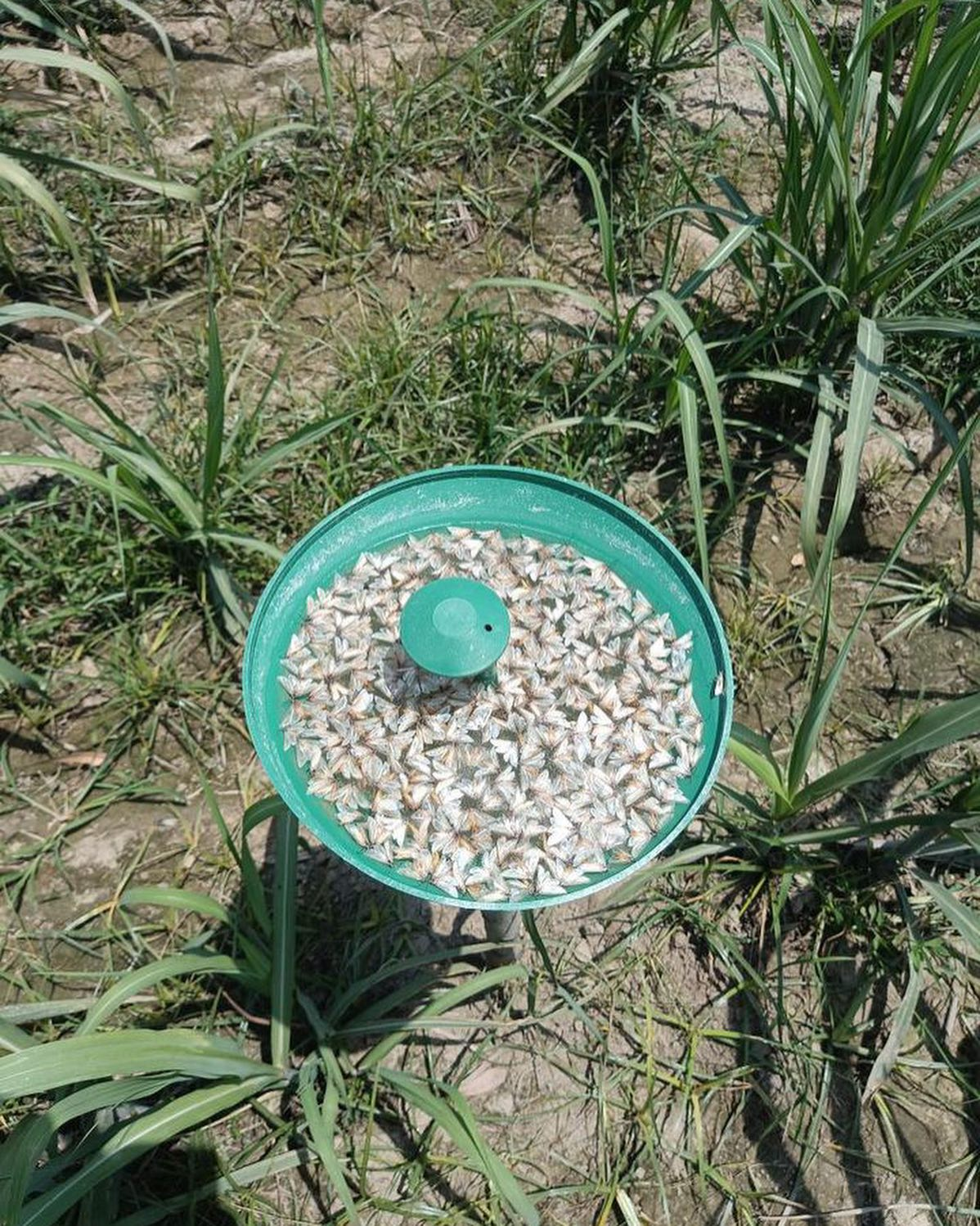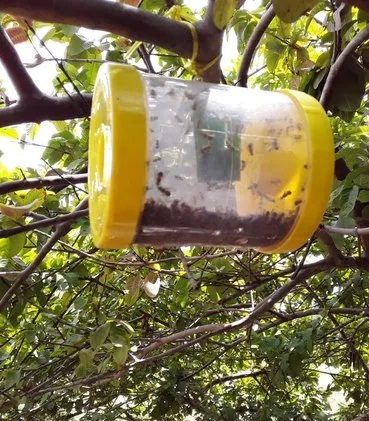Products and Services
Pheromone Traps for Pest Monitoring
Root Guard – Trichoderma-Based Bio-Fungicide
Pak-Original Waste Decomposer (Pak-OWDC)
Vermicompost Plus – Trichoderma-Enriched
Pheromone Traps for Pest Monitoring
Replace guesswork with precision. Our high-quality, cost-effective sex pheromone traps help farmers monitor pests like the cotton pink bollworm and sugarcane borers, minimizing unnecessary pesticide use.
- Premium UK-grade pheromones for superior efficiency
- Innovative trap design using recycled PET bottles
- Enables pest control based on Economic Threshold Levels (ETL)
Pink bollworm
The pink bollworm (Pectinophora gossypiella; Spanish: lagarta rosada) is an insect known for being a pest in cotton farming. The adult is a small, thin, gray moth with fringed wings. The larva is a dull white caterpillar with eight pairs of legs with conspicuous pink banding along its dorsum. The larva reaches one half inch in length.
The female moth lays eggs in a cotton boll, and when the larvae emerge from the eggs, they inflict damage through feeding. They chew through the cotton lint to feed on the seeds. Since cotton is used for both fiber and seed oil, the damage is twofold. Their disruption of the protective tissue around the boll is a portal of entry for other insects and fungi.
sugarcane borers pheromone traps
Pheromone traps are a valuable tool for monitoring and managing sugarcane borers, particularly the top borer (Scirpophaga excerptalis) and the internode borer (Chilo sacchariphagus indicus). These traps utilize synthetic sex pheromones to attract and capture male moths, aiding in early detection of infestations and potentially reducing pest populations.
How Pheromone Traps Work:
Attraction:
Sugarcane borer moths release sex pheromones to attract mates. Pheromone traps mimic these natural pheromones, luring male moths into the trap.
Capturing:
Once inside the trap, the moths are caught on a sticky surface or in a container of water, preventing them from escaping.
Monitoring:
By regularly checking the traps and counting the captured moths, farmers can track the population levels and flight activity of the borers.
Mass Trapping:
In some cases, pheromone traps can be used for mass trapping, where large numbers of traps are deployed to significantly reduce the borer population.
Advantages of Pheromone Traps:
Early Detection:
Pheromone traps can detect borer populations even at low densities, allowing for timely intervention.
Selectivity:
Traps are designed to be highly specific to the target pest, minimizing impact on beneficial insects.
Reduced Pesticide Use:
By enabling early detection and targeted control measures, pheromone traps can help reduce the reliance on broad-spectrum insecticides.
Cost-Effective:
Pheromone traps are relatively inexpensive and easy to deploy, making them a practical option for farmers.
Specific Examples:
Top Borer (Scirpophaga excerptalis):
Studies have focused on identifying and synthesizing the pheromones of this pest, and evaluating the efficacy of different trap designs and lure formulations.
Internode Borer (Chilo sacchariphagus indicus):
Research has explored the use of pheromone traps for monitoring and managing this borer, including studies on trap spacing and lure dispensers.
Weevil Borer (Rhabdoscelus obscurus):
Pheromone traps, particularly water traps, have been shown to be effective in capturing this pest, with potential impact on population densities.
Important Considerations:
Trap Placement: Proper trap placement is crucial for effective monitoring and trapping.
Lure Type and Dosage: The type and dosage of pheromone lure can impact trap catches, so it’s important to use appropriate lures for the target pest.
Integration with other methods: Pheromone trapping is often most effective when integrated with other pest management strategies, such as biological control and cultural practices.
Fruit Fly Pheromone Traps
Fruit fly pheromone traps are a targeted and eco-friendly method used to monitor and control fruit fly populations. These traps use synthetic versions of natural sex pheromones to attract male fruit flies, disrupting their mating cycle and reducing infestations. Commonly used in orchards, farms, and gardens, they help in early detection and integrated pest management without the need for harmful pesticides.



